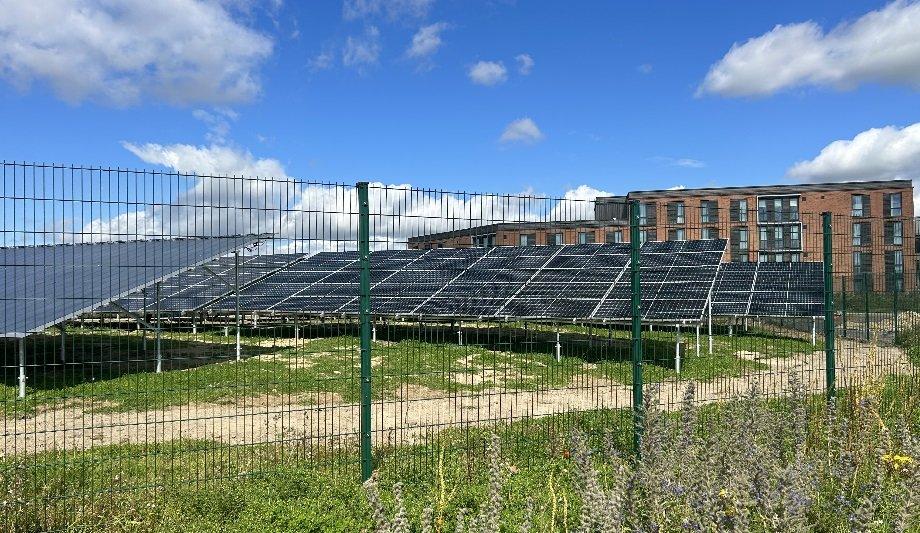Siemens has completed work on a 200 kWp solar farm for the University of York located at the University’s new Institute for Safe Autonomy, as part of a £1.5 million research project.
Funded through the UK Research Partnership Investment Fund (UKRPIF), the project will enhance the Institute’s research capabilities to develop and test robots and other autonomous systems for the inspection and maintenance of solar arrays.
Integrate robotic technology
The solar farm will create a ‘living lab’ for the Institute to give insight to landowners and operators
The solar farm will create a ‘living lab’ for the Institute to give insight to landowners and operators of solar farms on how best to integrate robotic technology in the field. It will also enable the Institute to become net zero for energy by 2025, generating power for more than 80 percent of the building’s 600 kWh expected daily use.
Siemens’ team supported through consultancy services helping to design, commission, and optimize the solar arrays for the robotic technology being used as part of the Institute’s research, in addition to setting up a data collection system for the panels which will underpin research projects at the Institute.
Range of installation positions
The farm, which spans more than 1,400 square meters, consists of a range of different panel configurations including static ground installations and a sun-tracking array. Some solar panels are also mounted onto the side of the Institute’s building and its rooftop as building-integrated photovoltaics (BIPV) to achieve a wide range of installation positions. It is one of nine projects that are set to improve environmental sustainability, thanks to almost £19 million of funding from UKRPIF.
Some solar panels are also mounted onto the side of the Institute’s building and its rooftop as BIPV
“Universities, as centers of knowledge and innovation, are uniquely positioned to lead the charge in addressing climate concerns. Through the solar farm, the University will gain valuable insights to enhance the use of robotic technology in driving a sustainable energy future. We were delighted to partner with them on realizing this project as we look to broaden the integration of such innovative technologies into our everyday lives,” Faye Bowser, Vice President for the Higher Education Vertical at Siemens.
Innovative research project
“Robotics, autonomous systems, and AI have the potential to transform the way we live, travel, and work in the future. Integrating them with the production of renewable energy will ultimately play a key role in the journey towards net zero. This innovative research project marks an important milestone for the Institute since we opened earlier this year and reaffirms our commitment as a university to sourcing sustainable energy,” Professor Miles Elsden, Director of the Institute for Safe Autonomy.
The solar arrays were installed by LYNX Sustainable Solutions Ltd. The Institute for Safe Autonomy is a new initiative at the University of York that takes a safety-critical approach to the design, development, and testing of robotics and connected autonomous systems. The purpose-built facility was completed in the summer of 2022 and provides collaborative work and test spaces for more than 100 researchers across a variety of disciplines.







